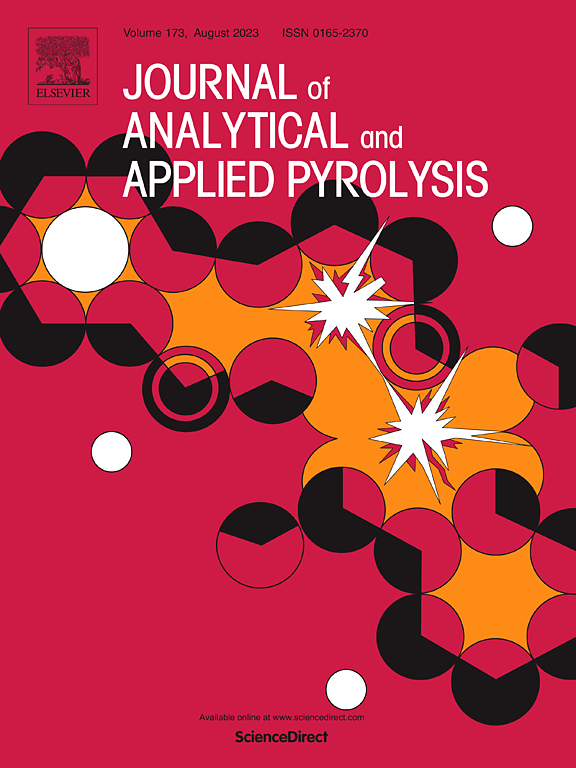Insight into fast infrared-assisted and coal rank on pyrolysis kinetics and products distribution
IF 5.8
2区 化学
Q1 CHEMISTRY, ANALYTICAL
引用次数: 0
Abstract
An infrared rapid heating reactor was employed to investigate the effect of coal rank on pyrolysis product distribution and pyrolysis behavior among different coals. The dynamic analysis demonstrated that the average Eα decreased with the coal rank increased, with values of 438.89 kJ/mol for lignite (LGC), 388.83 kJ/mol for long flame coal (LFC), and 338.20 kJ/mol for lean coal (LNC). The tar yields of LGC, LFC and LNC increased initially and then decreased. Notably, the LGC yield reached the highest yield of 23.20 % at 700 °C, but LFC and LNC got the maximum yields at 600 °C with yields of 13.10 % and 5.10 %, respectively. GC-MS analysis revealed that hydrocarbon content in pyrolysis tar increased with coal rank. Specifically, LGC exhibited a hydrocarbon content of 39.13 %, LFC showed 48.44 %, and LNC reached 57.86 %. Different coals displayed distinct pyrolysis mechanisms, with LGC generating H2 and CH4 through the breaking of straight and branched aromatic hydrocarbons at low temperatures, whereas LNC produced these gases through the cracking and condensation of aromatic rings. Raman spectroscopy revealed that LGC exhibited a higher content of aromatic hydrocarbons in char compared to LFC and LNC.
求助全文
约1分钟内获得全文
求助全文
来源期刊
CiteScore
9.10
自引率
11.70%
发文量
340
审稿时长
44 days
期刊介绍:
The Journal of Analytical and Applied Pyrolysis (JAAP) is devoted to the publication of papers dealing with innovative applications of pyrolysis processes, the characterization of products related to pyrolysis reactions, and investigations of reaction mechanism. To be considered by JAAP, a manuscript should present significant progress in these topics. The novelty must be satisfactorily argued in the cover letter. A manuscript with a cover letter to the editor not addressing the novelty is likely to be rejected without review.

 求助内容:
求助内容: 应助结果提醒方式:
应助结果提醒方式:


